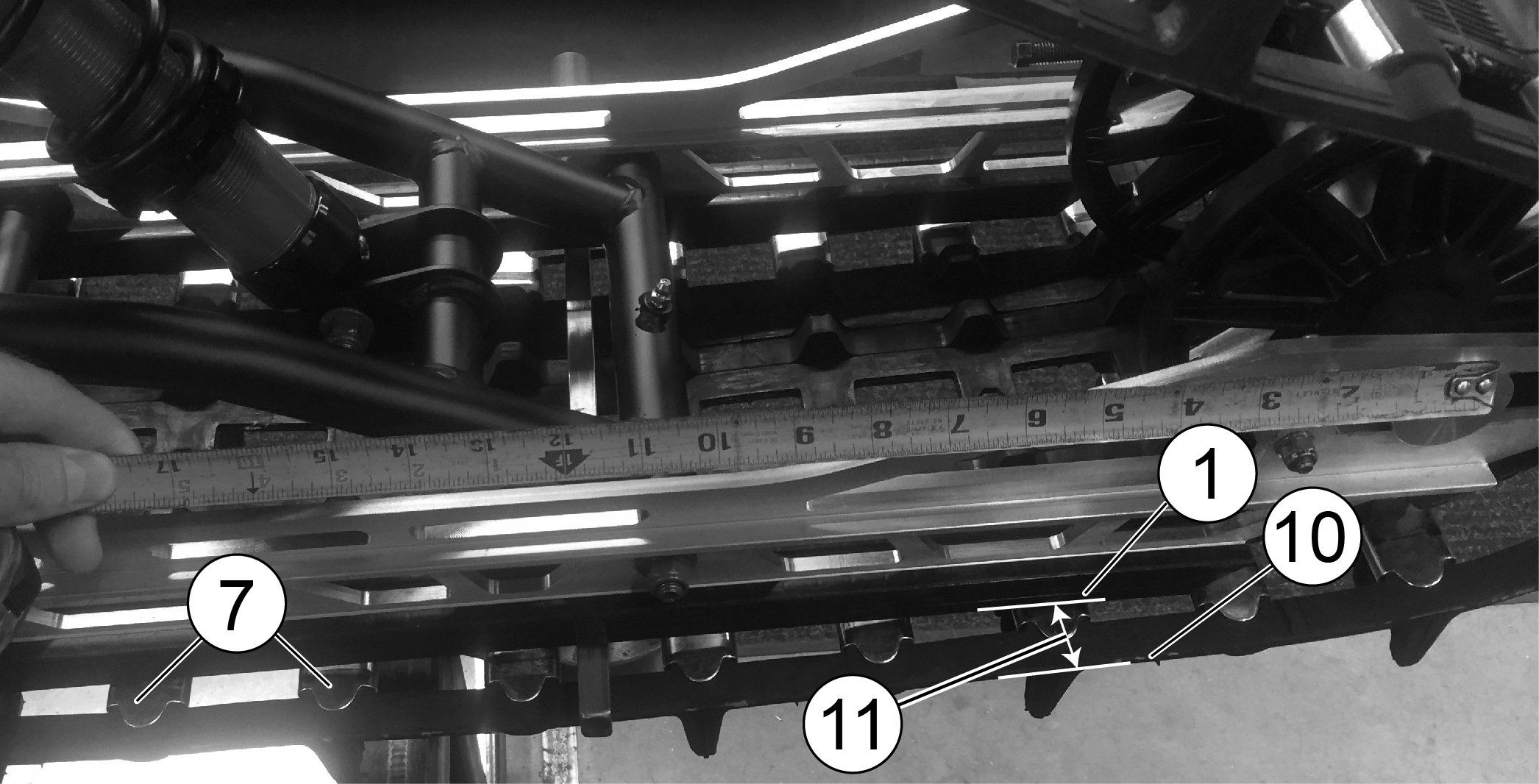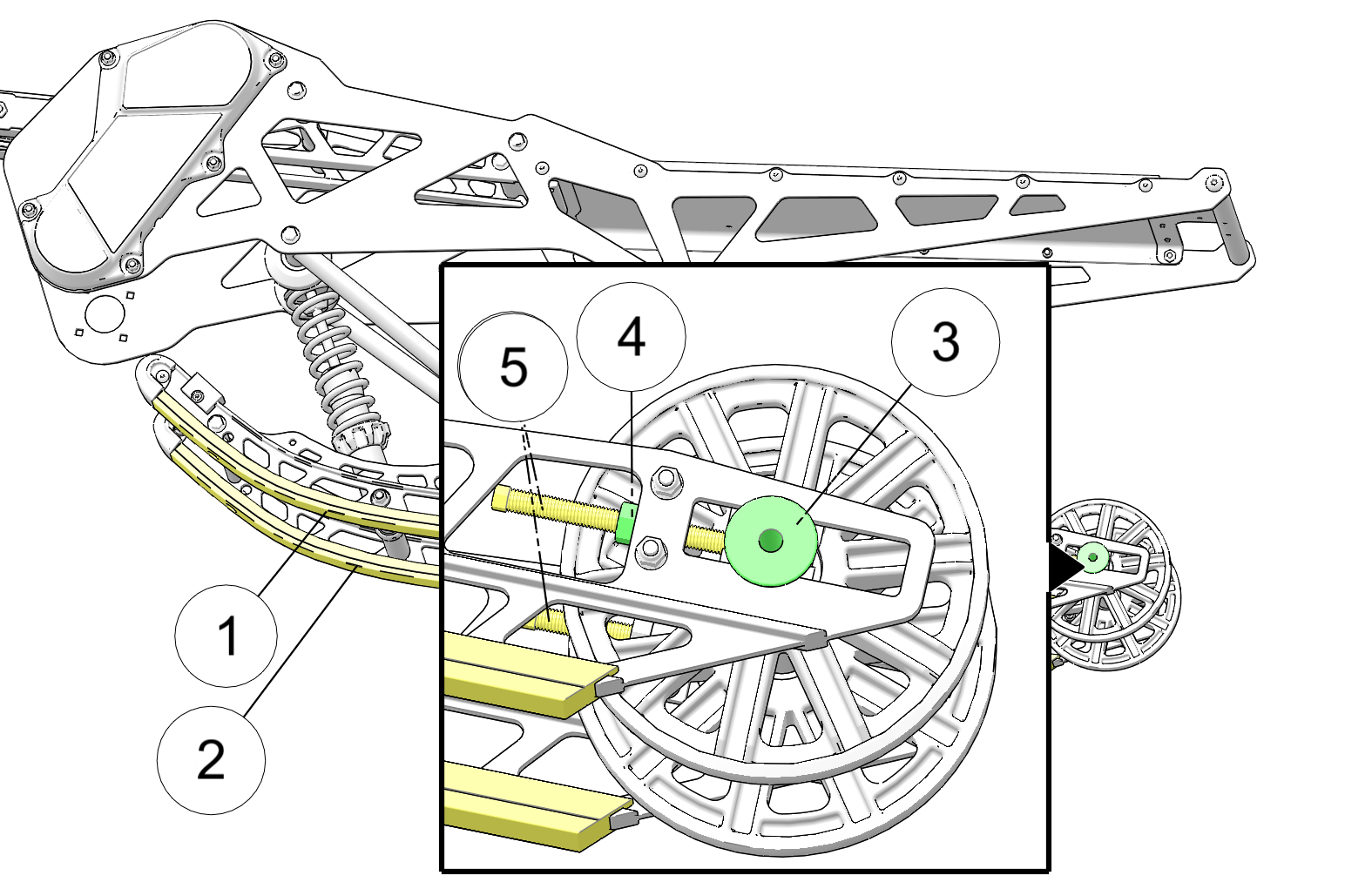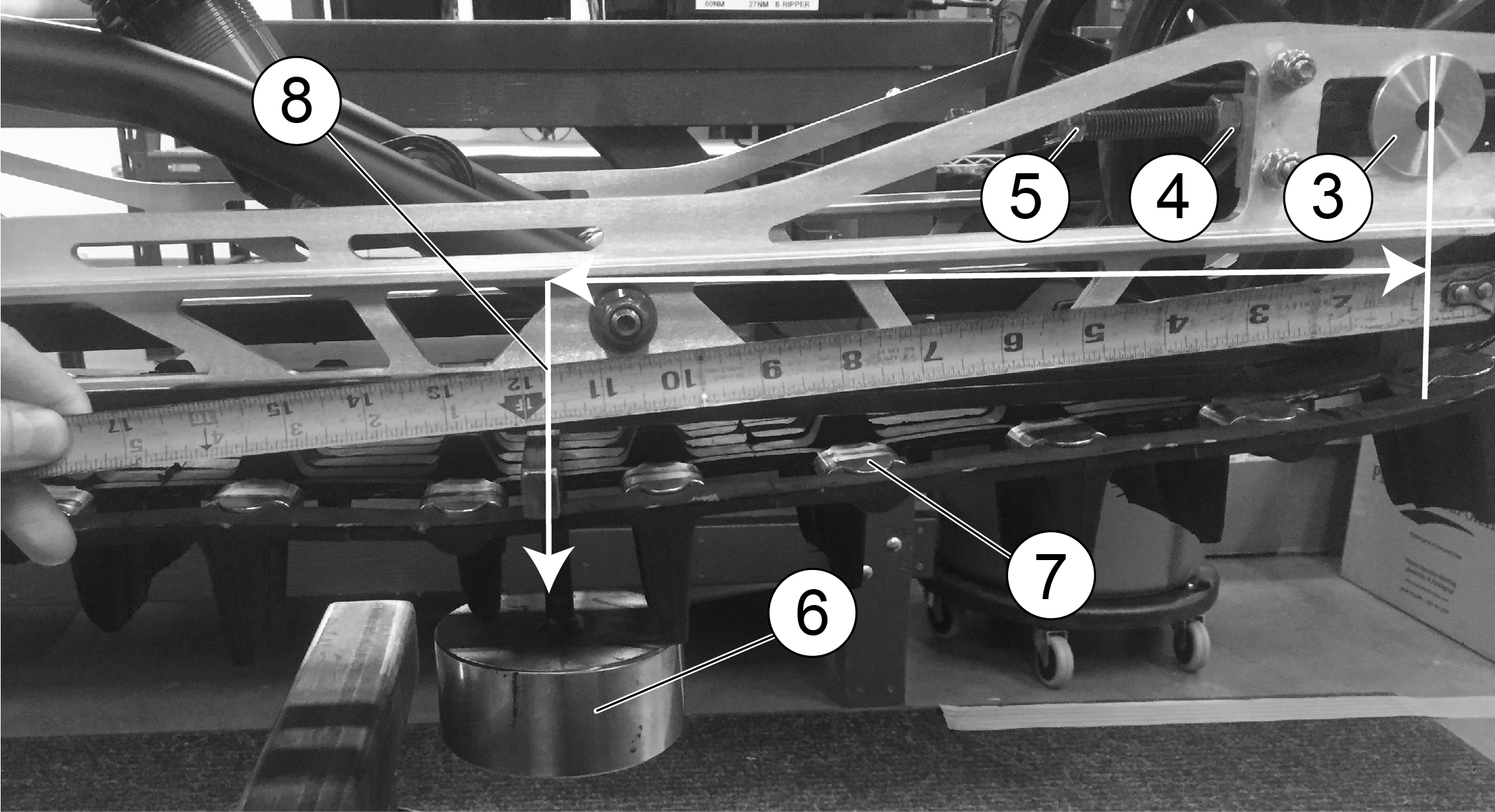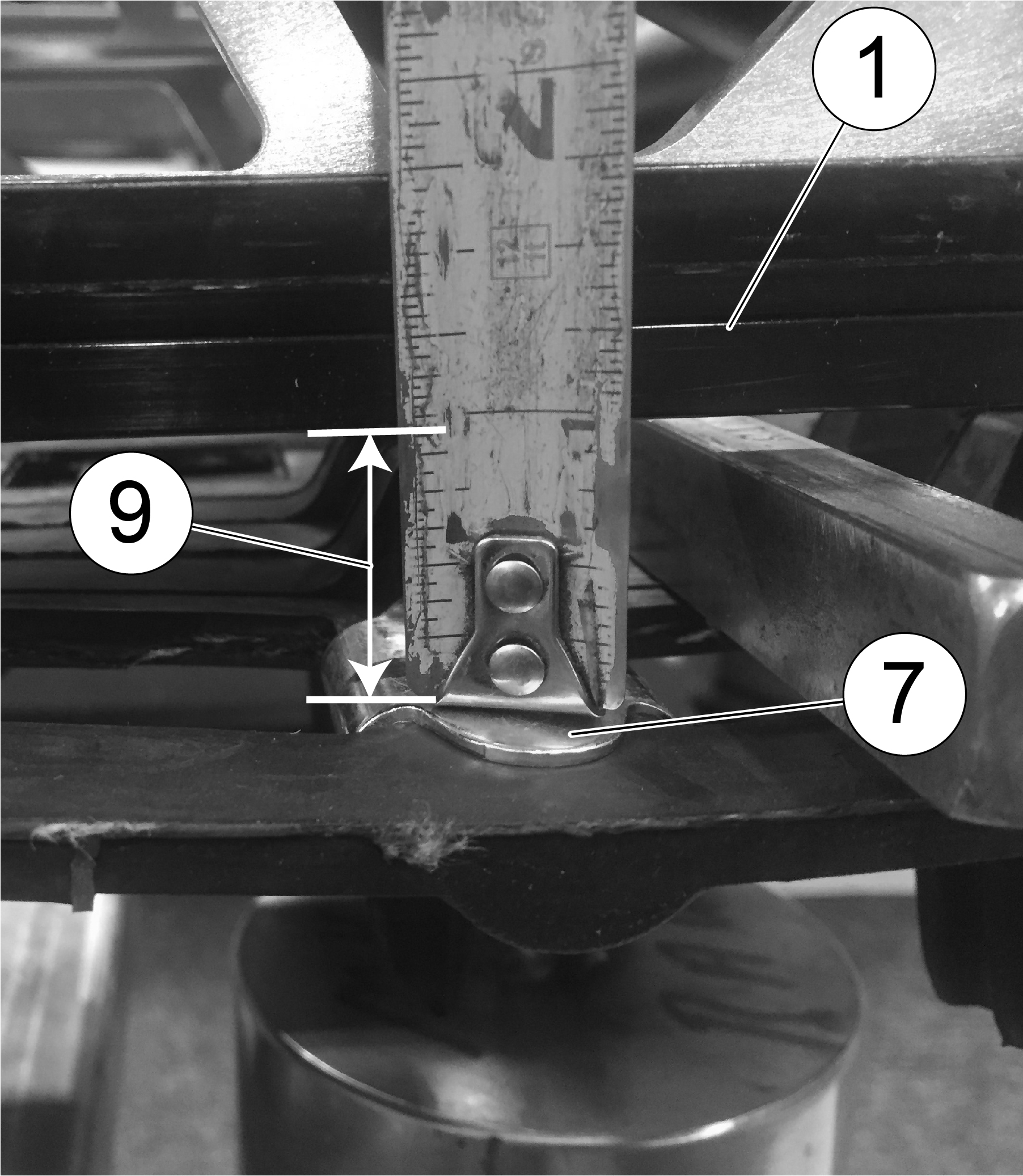
Content Source: 2020 Timbersled ARO/RIOT Owner’s Manual (9929951 R01) > Maintenance Chapter
| IMPORTANT |
|
The Owner's Manual for this vehicle contains warnings, instructions and other information you must read and fully understand before safely riding or performing maintenance on this vehicle.Always follow the warnings and instructions in Owner's Manual. Click the CONTENTS link above for the Table Of Contents, or download a full PDF of the Owner Manual in the Owner Support area of Polaris.com |
|
Broken track rods can cause a rotating track to come
off the snow bike, which could cause serious injury or death. Never
operate
with a damaged track.
Never rotate a damaged track under power.
|
If the track is running too far to one side, track alignment should be adjusted. See the following section, Adjusting Track Alignment.


If the track is running too far to the
right, tighten the right side of the track by turning the tension
adjustment bolt ![]() , on the right side
of the bike, to the right (approximately one-half turn).
, on the right side
of the bike, to the right (approximately one-half turn).
| NOTE |
| The amount you should turn the adjustment bolt on either side of the bike will depend on how far off center the track is running. Therefore it is suggested that you turn the bolt one-half turn at a time, checking the alignment between each half-turn adjustment to determine if additional adjustment is needed. |
| TORQUE | |
| Axle Bolt – 50 Nm (36.9 ft. lbs) |
If the distance between the hifax and track edge is approximately the same on both sides of the bike, and the track appears to run centered on the rails, the track is properly aligned
If the distance between the hifax and track edge is NOT the same on both sides of the bike, and the track does NOT appear to run centered on the rails, repeat the steps above until your track is properly aligned.
| NOTE |
| Before measuring and adjusting track tension, ensure the track is properly aligned. For more information on track alignment, see the Track Alignment section beginning on Track Alignmment. |

| TRACK TENSION DATA | |||
| SUSPENSION | PROPER SLACK MEASUREMENT | APPLIED WEIGHT | MEASUREMENT LOCATION - |
| All Model Types | 3/4” to 1” | 10 lbs | 10” to 15” in front of the rear axle |

If the slack measurement ![]() is less or greater than the proper slack measurement
( 3/4” to 1”), the track tension should be adjusted (see the following
section, Adjusting Track Tension).
is less or greater than the proper slack measurement
( 3/4” to 1”), the track tension should be adjusted (see the following
section, Adjusting Track Tension).
| NOTE |
| If the track starts to skip on the drivers, the track is too loose and will need to be adjusted. Occasionally this will happen after a new track has been run. |

Turning the adjustment bolts ![]() on each side of the bike to the right will push the rear axle
on each side of the bike to the right will push the rear axle ![]() back and tighten track tension.
back and tighten track tension.
Turning
the adjustment bolts ![]() on each side of
the bike to the left will
allow the rear axle
on each side of
the bike to the left will
allow the rear axle ![]() to move forward
toward the front of the bike putting less tension on the track.
to move forward
toward the front of the bike putting less tension on the track.
| TORQUE | |
| Axle Bolt – 50 Nm (36.9 ft. lbs) |
If the slack
measurement ![]() is within the proper
slack measurement range, your track tension is set properly.
is within the proper
slack measurement range, your track tension is set properly.
If the tension is still too loose or too tight, repeat the steps above until your track tension is set properly.
© Copyright Polaris Industries Inc. All rights reserved.